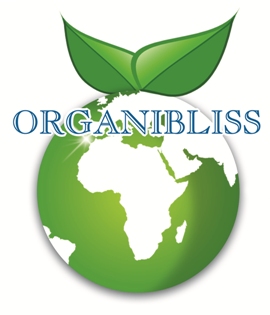
Foliar Feeding Indoor Plants
Foliar feeding is a fancy term that describes applying fertilizer directly to the leaves (think of the word “foliage”) of plants, instead of to the soil. Since the 1950s, agricultural scientists have proven that plants are able to directly absorb nutrients through their leaves, often leading to spectacular yields and growth spurts that can be observed in as little as an hour.
How It Works
Every grower knows that leaves are the “factories” of the plant, converting sunlight into energy for growth and repair. Plant leaves also have the capability of directly absorbing water as well as nutrients, both through the epidermis (“skin”) as well as stomata (the “pores” of the leaf surface).
Foliar feeding was once considered to be damaging to tomatoes and other fruiting indoor plants, but agricultural science has proven that the technique of applying fertilizers directly to leaves is an effective and healthy way to increase growth and crop yield for all leaf-bearing plants.
Unlike fertilizers applied to the soil, which are usually based on the nitrogen-phosphorous-potassium (NPK) matrix, foliar feeding solutions are more focused on delivering plants the 50 plus minerals that they need for health and vigorous growth. Many foliar feeding solutions are derived from kelp, sea plants, or extracts from plants that thrive in harsh and desert environments, such as Neem trees.
Tips for Foliar Feeding Indoor Plants
Because foliar feeding refers to the leaves, it is important not to begin applying nutrients to the leaves until the plants have developed enough leaf surface for this technique to be effective.
Plant leaves tighten up and close their “pores” during hot weather, so it is recommended that foliar feeding be done early in the morning, in the early evening, or during cool periods. While plant growers regularly debate over when the optimum period is to apply foliar feeding, it is generally recommended when the plant has been transplanted, during the flowering phase, and when fruiting begins.
Leafy crops such as lettuce and spinach generally prefer one application of foliar feeding after transplantation, as well as a second application three weeks later, followed by a third and final application during the last week before harvest.
Fruiting crops like peppers, cucumbers, and tomatoes generally benefit the most from foliar feeding immediately following the first phase of flowering, and then regular feedings every 10-14 days during the harvest period. Medicinal plant tend to be susceptible to environmental stresses such as spider mites and Powdery Mildew. Organibliss will control both, but the spraying frequency must be at least once a week – ideally twice a week.
Organibliss
One of the best products on the market today for foliar feeding indoor plants is Organibliss™. Made entirely from organic, plant-based nutrients, Organibliss has been demonstrated to significantly improve plant health and yields, giving growing plants the essential micronutrients and nutrition that they need.
Sold in a convenient concentrated liquid formula, growers simply mix Organibliss with water to the right blend and spray on leaves. Organibliss is made from a special formula of all-natural ingredients, and includes neem extract (also known as Azadirachta indica, Nimtree, or Indian Lilac), which is jam packed with all of the essential nutrients that indoor plants need to thrive.
Testing and Observation
The best way to customize foliar feeding for your indoor plants is to experiment. Try applying the feed on some leaves, leaving other leaves untreated, and observe the differences. Many indoor growers report that they can see a noticeable difference in growth and size in as little as an hour after application of foliar feeding.
Don’t Neglect the Soil
Although foliar feeding is an amazing way to boost your crop yields and increase plant size, it is important to always remember to take good care of the soil or growth medium in which your plants are rooted. Organibasic™ – Granular Soil Adjuvant is my by the same company as Organibliss, and is also all-natural, organic. Apply just a pinch of it near the stalk of each plant as a top dressing at the beginning of the growing season, and then once again half way through. Each time you water the nutrients penetrate the soil to build a healthy, vigorous root system, and they wick up through the roots to become systemic – part of the fabric of the plant.
Eliminate Synthetic Pesticides
Since Organibliss is all-natural, organic, and OMRI listed – approved for organic use, there is no need to “flush” because it is made from plants and nothing else. Farmers can completely eliminate synthetic pesticides once they switch to Organibliss and Organibasic.





















 © 2017
© 2017
Recent Reviews